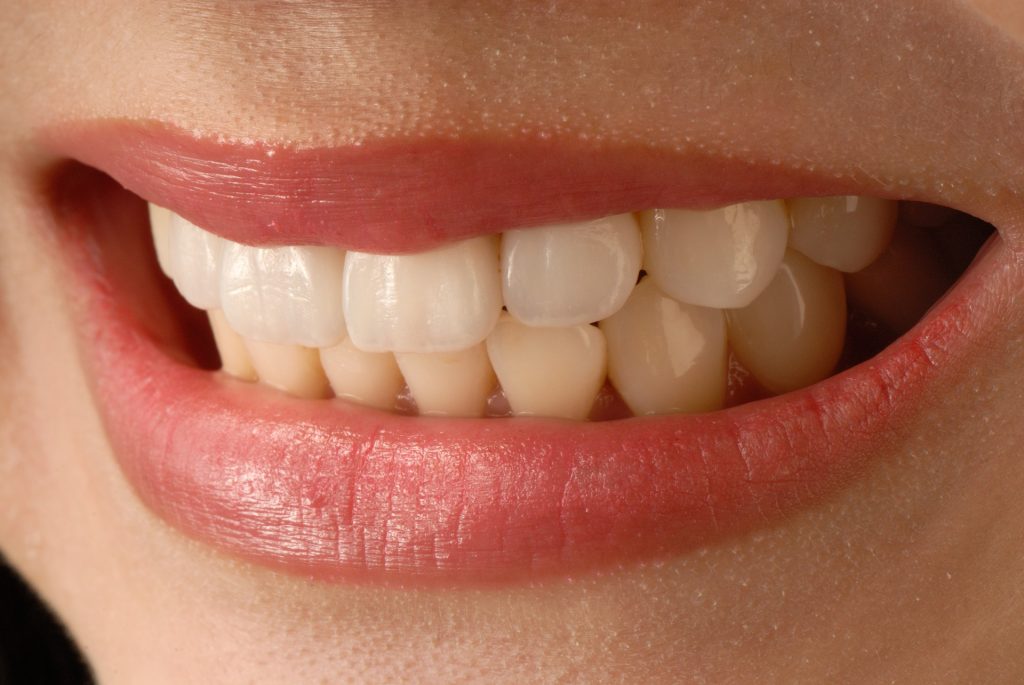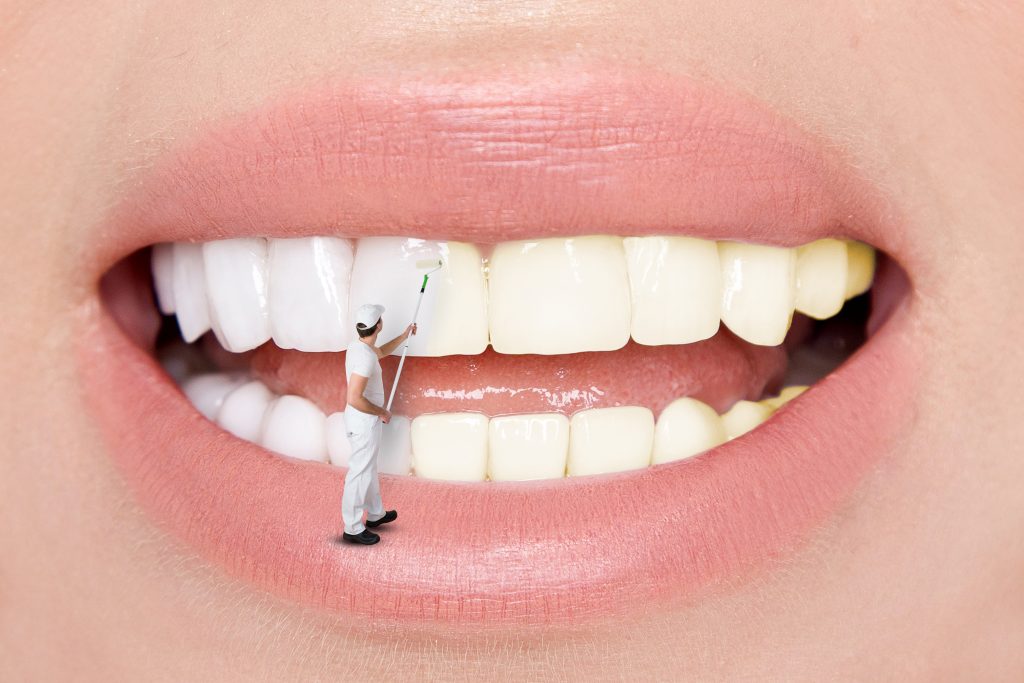Dental veneers are shells that are the same color as the patient’s natural teeth and which are custom made to fit perfectly over the existing teeth to change their size, appearance, shape or color. Sometimes called “having a smile makeover”, getting veneers has become very popular since they transform a patient’s mouth completely.
Usually, veneers will only be placed over the patient’s front teeth rather than over the molars towards the back of the patient’s mouth. This is because they fix teeth which have been chipped or discolored, or which are slightly crooked or different sizes. They cannot replace a missing tooth. Should a patient’s back teeth need restoration, an onlay or an inlay could be a better choice.
Veneers are a permanent solution, so once a dentist has placed them in the patient’s mouth they cannot be removed. Should you have cavities or gum disease, restorative treatment is required, not veneers.
In order to ensure that veneers are placed correctly, it’s essential to go to a dentist who is both licensed and highly experienced.
Usually, the shells used by dentists are porcelain dental veneers, but sometimes, they may be made out of composite resin. It’s possible to choose from several veneer types.
Porcelain Dental Veneers: Cost, Procedure, and Results
A porcelain veneer represents the most attractive and also least harmful solution for patients. A porcelain laminate veneer will be extremely biocompatible and so will rarely cause any damage to the gum tissue or soft mouth tissues. As a result, they improve a patient’s smile significantly, not least because porcelain looks very natural. The dentist permanently places porcelain veneers inside the patient’s mouth and this necessitates some tooth shaving before they can be placed.
These veneers bring a number of advantages but they also have some drawbacks:
Advantages:
- They easily blend with the patient’s natural tooth coloration
- They can effectively resist staining
- They’re strong as well as durable
- They are unlikely to fracture, chip or break
- Their texture is smooth and tooth-like
- They won’t cause harm to the gums or surrounding teeth
- When cared for properly they won’t suffer from excessive plaque build up
- They’re long lasting (around 8 – 15 years)
Disadvantages:
- They’re very expensive, costing $925 – $2,500 for a single tooth
- This type of dental veneers procedure is lengthy as well as invasive
The Composite Veneer

Composite veneers are made out of a mixture of inorganic and organic materials, with the filler being the primary inorganic material and the coupling agent, initiator and resin itself being natural. While composite veneers are strong, they’re not as robust or durable as porcelain ones. They’re made with the same bonding material used for making tooth-colored fillings and this allows them to be cheaper than porcelain veneers but they won’t last as long and can stain easily with time, despite the fact they blend fairly well with the patient’s natural tooth color.
A composite veneer is a permanent solution, and therefore, it too requires the tooth to be shaved before it can be placed.
Advantages:
- They’re fairly strong, durable and robust
- The placement procedure is slightly less invasive as a smaller amount of enamel must be removed before they can be placed
- The have a natural appearance but can be stained quite easily with time
- They’re unlikely to cause harm to gum tissues
- They’re simple to repair should they be chipped or broken
- Only a single visit to the dentist’s office is needed and no temporary restoration is required
- They can last for as long as five to seven years
- They cost less than porcelain veneers – only $250 – $1,500 per tooth
Disadvantages:
- They’re not as strong as a porcelain veneer and can get stained over time
- They’re not as long lasting as porcelain veneers
- The placement procedure is quite lengthy
Lumineers
Lumineers are a specific brand of veneers that is made out of very thin porcelain laminate. Only a small amount of preparation will be needed before placing these veneers and, for this reason, less natural structure must be removed from the teeth before Lumineers are able to be placed. Typically, dentists will use Lumineers to treat teeth that are either discolored or that have an irregular shape. They have a smooth feel and, as a result, they both look and feel quite natural in the mouth.
Advantages:
- The placement procedure can be reversed
- Less preparation is needed before they are placed over the teeth
- They’re cheaper than porcelain veneers – only $800 – $2000 each
Disadvantages:
- They’re not as long-lasting as traditional veneers
- They don’t have as natural an appearance as traditional veneers
- They can be broken or damaged more easily than regular veneers
Temporary Removable Veneers
Sometimes called snap-on veneers or snap-on smiles, veneers that are temporary and removable are now quite popular since they’re user-friendly and cheap. You can take them out whenever you want, unlike composite resin or porcelain permanent veneers.
You can get hold of removable veneers quickly and easily. Simply place an online order, then once your order is processed, an impression kit with dental putty is sent out in the mail. This putty comfortably molds to your tooth shape so your new smile can be firmly held in position. Instasmile is just one well-known brand of removable veneers. Furthermore, they can suffer from more plaque build up and may also harm gum tissues over time when frequently worn. For this reason, dentists will always recommend permanent veneers over temporary ones.
What Do Dental Veneers Cost?
There are several factors to bear in mind when working out how much getting veneers will cost. These include:
- Which material you want for the veneers
- The amount of veneers required
- Your dentist’s location
In general, a single veneer can cost as little as $600 or as much as $2,500. You also need to remember your dental insurance won’t cover the cost of your veneers as they’re not medically necessary and only a cosmetic procedure.
Is Eating Possible With Temporary Veneers?
You can eat when wearing temporary veneers however they must be well cleaned after eating.
Snap-On Veneers – Will They Work?
Snap-on veneers will work short-term and they’re quite cheap but they won’t look natural like traditional veneers. Also, they’re likely to get damaged with time since they’re not long-lasting or durable.
Which Snap-On Veneer Brand Is Best?
Several well-known snap-on veneer brands are popular these days including Removable Veneers USA, TruSmile Removable Veneers, Instasmile and NYC Veneers.
Will Composite Veneers Cause Damage To My Teeth?
There’s no need for concern about composite veneers having a negative impact on your oral health or causing damage to the teeth. However, it’s important to bear in mind that some of your tooth enamel needs to be removed before the veneer can be replaced. Your tooth’s natural structure will never grow back and, therefore, composite veneers are not removable.
Will I Be Able To Remove My Veneers?
Neither porcelain or composite veneers can be removed. Lumineers are removable as are snap-on veneers but they aren’t as long-lasting or durable as permanent veneers.
Are Composite Or Porcelain Veneers The Best Choice For Me?
Porcelain veneers have a more natural appearance. They are also more resistant to stains and more durable when compared with composite veneers that are more at risk of staining or breakage over time. Nevertheless, although
Composite Veneers/Composite Bonding – What’s The Difference?
A composite veneers is made out of the very same material used for composite bonding, but the difference between these dental restorations is that composite bonding will only cover a small area of the tooth. Meanwhile, a veneer will cover the entire tooth surface.

